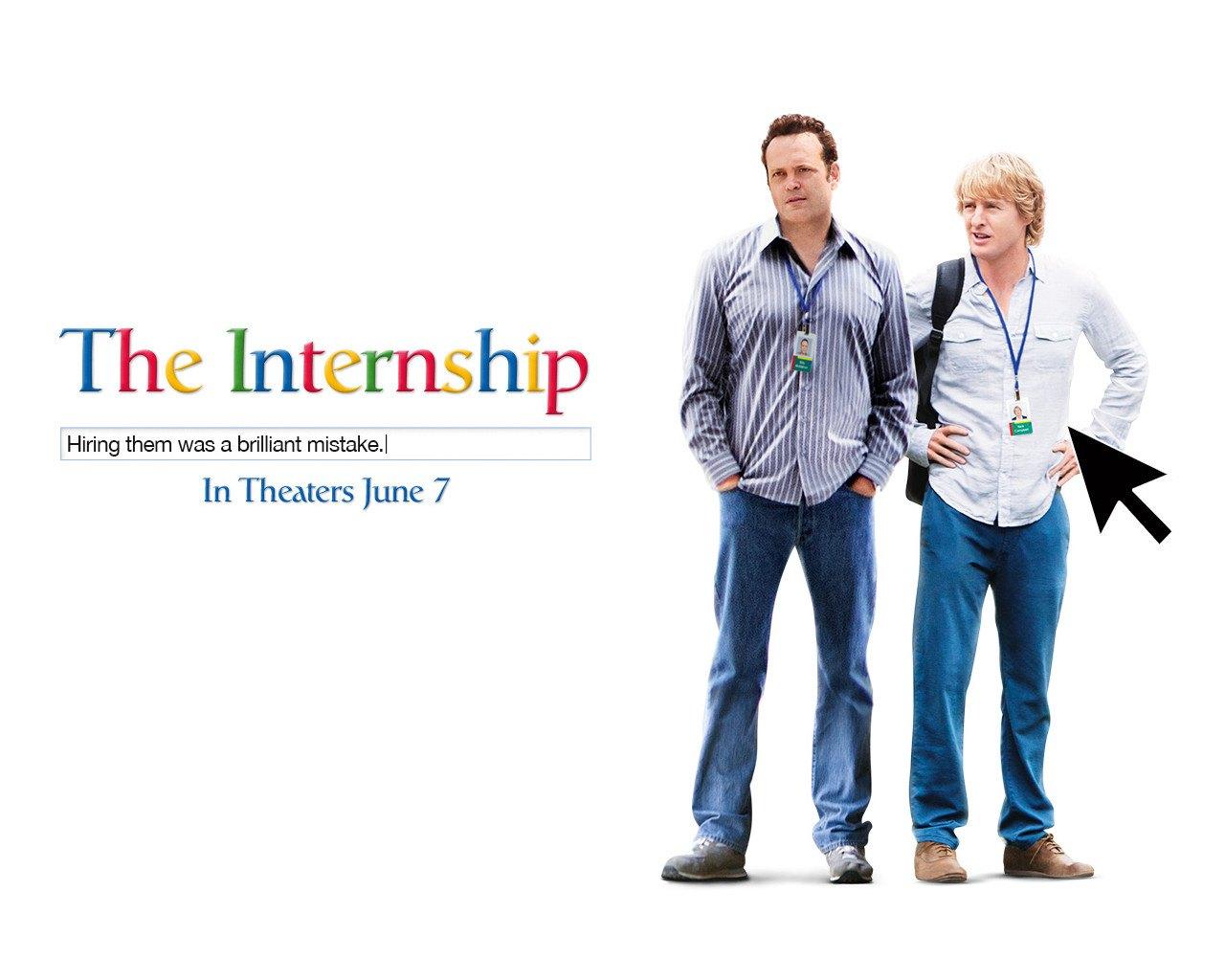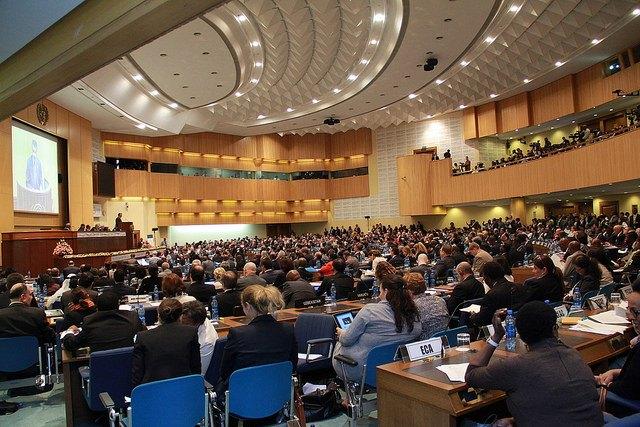Free Utility Customers To Profit From the Clean Power Plan


Editor's Note: Today at the White House, President Barack Obama and EPA Administrator Gina McCarthy released the final Clean Power Plan. Get the quick summary and our take on the implications here.
Today the EPA released its final Clean Power Plan. The Clean Power Plan is designed to dramatically reduce global warming emissions by electric utilities. Massively increasing the deployment of zero-site emissions solar power is a key implementation path of the Clean Power Plan. Under the Clean Power Plan, each state is empowered to design a plan for achieving their emission reducing goals.
The adoption of the Clean Power Plan begs this question: Why shouldn’t an electric utility customer be able to put all the solar equipment possible on their roof, net out their electric bill plus sell any surplus to the grid for a profit? But what state allows this today? The answer is none.
California just inched a little closer to this vision of customer empowerment. The state’s electric gird operator has just issued an order that allows a residential or commercial utility customer to sell electricity from his or her solar system into the grid for a profit. The only catch is that building and home owners are prohibited from doing so if they also use some of the electricity from their solar system to net out their electricity bill under California’s net-metering program.
Is this just one more example of how utilities and their regulators are limiting customer-owned solar power? Or is this a progressive step toward realizing the potential that customer-owned solar holds for achieving lower electricity bills plus reduced emissions?
Solar: Too cheap to meter
The disruptive threat confronting the electric utility industry (and their regulators) is that the incremental cost of producing electricity from a rooftop solar system is zero! The cost of solar power is almost all in its capital investment (there are also incremental costs like washing off the panels to ensure maximum output, any repairs plus insurance).
The cost-competitive advantage of solar is that the sun shines and electricity flows into the grid at zero incremental cost. The question is then whether it is customer-owned solar or utility-owned solar that is the least costly path to building a solar infrastructure.
Why utilities should be the developer of solar power
Utilities and their regulators have compelling documentation that the monopoly utility system can develop solar power at the lowest cost per kilowatt-hour. The utility serving the city of Austin, Texas, just received solar power plant bids delivering electricity at an average price of 4 cents per kWh with some bids coming in at less than 4 cents per kWh. This low price is enabled by the current tax law that allows a 30 percent investment tax credit. Even without this tax credit, the cost of solar is approximately 6 cents per kWh. And even better, there is no fuel price or supply risk to the utilities as there is for power plants running on fossil fuels.
It would appear that utility-owned solar is the least costly option. On the other hand, when was the last time a utility lowered its rates because it installed a lower-cost power plant? Utilities continuously file least cost-of-service plans that their regulators approve. But the price of electricity is not falling. This has not always been the case.
The founding premise for regulated electric utility monopolies was to enable power plant economies of scale to lower electricity bills. It was also based on economies of scale to enable the expansion of universal service. This golden age where regulated, integrated electric monopolies delivered expanding service plus lower prices ended in the 1970s. What remains are rules that too often constrict customer choices. What remains is the opportunity for the monopoly to earn a guaranteed return on invested capital.
Why customers should develop solar power
In California, a customer-owned rooftop solar system, enabled by the 30 percent investment tax credit, can generate solar power for approximately 7 cents per kWh. On the surface this appears to be almost twice the cost per kilowatt-hour for a utility solar power plant like that being developed by the city of Austin’s electric utility.
However, there are real cost and environmental distinctions that increase the attractiveness of customer-owned solar power. The first is that the customer can realize actual cost savings in the form of a lower electricity utility bill. In states that enable net metering, customers have the potential to reduce their annual electricity bills to a level equal to, or less than, what they used to pay on a monthly basis. This is customer-owned solar power’s greatest appeal. Unlike utility-owned solar, customer-owned solar has a clear path to a reduced electricity bill.
There is also substantial environmental impact benefits. Unlike many or most solar power plants, placing a solar system on a customer’s roof generates almost no incremental environmental impacts. In comparison, utility-scale solar is built on land that has to be graded and then controlled for weeds. This can generate airborne and soil environmental impacts.
Typically, the utility solar power plant requires the construction of a substation and transmission lines to connect it to the grid. In California, one noted new transmission line to connect renewable power plants required construction of a high-voltage power line through national forrest land. Customer-owned solar is typically housed on an existing roof with marginal or zero environmental impacts. The system is connected to the existing utility grid.
How to value the grid
How to value grid service is a huge area of contention when regulators evaluate customer-owned solar. The utilities assign significant value to the grid, and this value is often substantially confirmed by regulators. What utility customer can dispute the value of the grid? Customers view the electric grid and Internet access as two of their most valued interconnections.
The disruptive reality for utilities and their regulators is that the value of the grid is diminishing. The traditional monopoly grid of electrons flowing to the customer and money flowing to the utility is losing its value for two reasons. The first is that the traditional grid is increasingly dropping service due to an increase in storm violence created by global warming. Whether it is a hurricane hitting New Jersey, a snow storm burying Boston or tornadoes cutting across the heartlands, the utility grid is under assault. Growing numbers of customers are buying onsite generators and batteries because the grid is increasingly becoming valueless during storms.
Declining costs for customer-owned technologies are the second driving force devaluing the grid. Much of the technology excitement tied to electricity service is on the customer’s side of the meter. Solar will soon be at grid price parity across the U.S. Mass customer adoption of customer owned solar systems is now being limited by state regulations and not price competitiveness. Batteries are on the cusp of major price declines. Customer-owned batteries are on a declining cost curve toward being competitive on price and reliability with grid service. Customer investments in energy efficient technologies, like LED lighting, now deliver a four-year, or less, financial return on investment. Combined, a perfect technology storm is on the horizon that will open the door to a significant percentage of customers leaving the grid to save money, increase their service reliability and reduce their environmental footprint.
The ultimate devaluation of monopoly service is the emergence of Zero Net Energy buildings (ZNE). ZNE buildings annually generate onsite renewable energy equal to the building’s annual consumption. These buildings are enabled by smart technologies that integrate solar, batteries and energy efficiency to achieve the least costly operations plus a reduced environmental footprint. California has now adopted Zero Net Energy as a foundation of its building codes. The Zero Net Energy building has the potential of achieving mass market acceptance by delivering “cost less, mean more” customer results. Such an event will massively revalue the grid as a hub that must supply competitively priced energy, reliability and lower emissions if it is to win customers.
Utility regulation in crisis
Utility regulations are grounded on over a hundred years of legal precedent. It is a system struggling with the disruption being created by cleaner technologies like solar, batteries and ZNE buildings. It is struggling with how to maintain system reliability while enabling innovation, conflicting definitions of lowest cost, competing claims around customer fairness and utility expectations for earning on their invested capital.
We have been here before. Up until the mid-1980s the telephone industry was a regulated monopoly just like today’s electric utility industry. At one time, no phone could be connected to the phone grid that was not manufactured by the monopoly. In fact, customers were prohibited from owning a phone. They had to rent one from the phone company. Regulation approved this based on maintaining grid reliability, customer fairness and least cost.
We now face similar regulatory constraints to the mass adoption of a customer-centric electric grid. Regulation is struggling with the rapidity of change. The issue is how to maintain grid reliability, customer fairness and costs when customer-owned technologies threaten to make coal-fired power plants, that still generate about 40 percent of U.S. power generation, obsolete on the basis of cost, regulatory compliance and environmental impacts. The issue is how to sustain the grid’s operation, and revenue streams, when customers are increasingly seeking the freedom to buy technologies that offer lower electricity bills and protection against grid disruptions.
The ultimate regulatory challenge is how to reengineer the grid into a hub where electrons and money flow bilaterally between the customer and the utility. The ultimate monetization of the Zero Net Energy buildings is to arbitrage prices and reliability between onsite solar, onsite batteries and grid service. This holds the potential of generating superior economic incentives, across the widest segment of our economy, to reduce the greenhouse gas emissions that are driving global warming. It holds real potential for delivery lower electricity bills. It is a regulatory challenge that will require regulators (and legislators) to free customers to profit from the Clean Power Act.
Image credit: Flickr/Tim Fuller
Coho Salmon’s Survival in California an Upstream Swim


The fishing industry is worth $1.5 billion in California, but it has been long under threat for a bevy of reasons. The rapid post-war development throughout the Golden State was one massive factor in starting the rapid decline in the size of California’s fisheries. The state’s ongoing drought crisis is another reason why many of this once ubiquitous species of fish are endangered and are close to disappearing altogether.
Not that the state of California has turned a blind eye to the problem. True, the fishing sector is a tiny one when the state’s entire economy is measured, but it is one important to many rural communities as both commercial and recreational fishing is the lifeline for many small towns and remote areas. To that end, California has invested at least a quarter of a billion dollars in habitat restoration over the past decade in attempting to revive fish species including steelhead trout and varieties of salmon.
But the latest drought still poses a threat to California’s fish. One species, the Coho salmon, was once a large part of the state’s salmon industry. But starting in the 1970s, their numbers rapidly dwindled, and only one percent of its historic population exists. While conservationists have done an admirable job trying to revive the Coho, they are on the losing end of this fight. In northern California, the growth of marijuana farms is siphoning off water that would have otherwise sufficed for salmon habitat.
If species such as the Coho have even a fighting chance of surviving in California, then the efforts of companies such as the Mendocino Redwood Company (MRC) are important.
MRC manages about 350 square miles (907 km2) of forestland in “treehugger” country, Mendocino and Sonoma counties. These lands are slathered in coastal redwoods and Douglas Firs. Its sister company, Humboldt Redwood Company (HRC), manages about the same amount of land farther north, in uber-treehugger country. Both companies have promised to be better stewards of these forests than the lands’ previous owners, which had scored permits for clearcutting some of its acreage years earlier. MRC and HRC have promised transparency, more selective cutting and adopting measures that are more ecological in order to produce long term sustainable timber supplies.
One program involved land surround Greenwood Creek in Mendocino County, one of the many watersheds that falls on MRC’s land. In the late nineteenth country, a dam was built at the creek’s mouth. Industrial logging through the twentieth century further damaged the local ecosystem, and an area once home to schools of Coho salmon had run become bereft of the species.
The biggest problem was that the creek and streams feeding into the waterway had become ridden with sentiment. To that end, MRC partnered with various state agencies and other organizations to reduce the amount of sediment in over 225,000 acres, which the company says resulted in 17,000 cubic yards (13,000 cubic meters) of sediment diverted from Greenwood Creek.
As a result, Coho salmon have returned to the area. The local press has reported sightings of 60 to 70 young Coho salmon have returned to streams from which they had been absent for 50 years. Meanwhile the Coho population in Mendocino County has almost quadrupled between 2010 and 2013, when latest figures are available. The Coho are not out of the woods yet—but they are returning to these woods in Northern California, and are offering hope that the California fishing industry can not only survive, but thrive in the long run.
Image credit: Fishwatch.gov
Shell Battles for Drilling Amid Plummeting Profits in Second Quarter


The demonstration couldn't have been better planned. Greenpeace protesters swung on carefully-strung wires from the St. John's Bridge in Portland, Oregon, last Thursday -- obstructing the path of a Royal Dutch Shell icebreaker ship that was attempting to leave port. Below, kayakers milled around the waters of the Willamette River, Portland's key inland shipping lane.
Onlookers cheered from the shoreline. Those who were positioned in path of the vessel stocked themselves with plenty of food and water in case the standoff went on for days. And for a while, it looked like it would. Shell's vessels, bound for the Arctic, where the company was given federal go-ahead to start drilling, appeared to be going nowhere. For now.
Earlier that day, Shell's 2015 first quarter report reflected a similar quandary. Second quarter results indicated that low oil prices and demand in the past year had cost the company $2.3 billion. In an effort to stem the losses, Shell had announced it would cut 6,500 jobs and sell off $20 billion in assets over the coming year.
Last April, BP reported losses that were even worse. Profits plummeted 60 percent by the first quarter of 2015, revealing a widening gap in its earning capacity since the start of 2014. Shell showed the same results for that quarter as well. According to one analyst, it was the worst loss in profits for oil companies since 2009.
Both companies are blaming the collapse of their profits on external issues like oil prices and dwindling demand for drilling in places like Alberta, Canada, where a new technology once promised huge returns for oil and gas investments. Shell's decision to pull the plug on a 200,000-barrel tar sands project earlier this year was an indicator that it was being increasingly careful about the investments it chose. The Pierre River Mine, once thought to be a profitable investment, is the largest development of its kind in the Alberta oil sands region.
In fact, it is in the Alberta oil sands that one finds the biggest indicator of what may be in store for these oil and gas companies. TransCanada and Suncor Energy have both cut jobs, unable to sustain against the falling price of the barrel. The loss of thousands of jobs in Alberta's once flourishing oil fields is a change that few in western Canada would have foreseen two years ago.
And there is another underlying current that links all of these companies: increased, vocal public scrutiny. Over the past decade, all of these companies have been the target of public protests, blockades and media campaigns. And all have sustained financial losses as a result of business decisions that critics -- and affected communities -- felt weren't in their best interests to support.
In 2009, Suncor took Greenpeace to court for interrupting its production in 2009. A Suncor refinery was also the target of protests in 2014. The demonstrations against Transcanada's Keystone Pipeline are legendary, but the company has also been the subject of protests in Quebec, where a few hundred individuals turned out to protest seismic testing in the small town of Cacouna. And BP's fight with the U.S. court system over compensations for the Deepwater Horizon spill is ongoing, as has been the vigilant protests by environmentalists to ensure that restitution is fulfilled.
Shell, which fought a lawsuit for a massive series of oil spills in Nigeria, has also been under pressure to compensate local community members for the spills. The company's costs now not only include legal fees from the 2008 spills, but also the ongoing damage to its reputation as a company that is accused of not living up to its word.
On Thursday evening, after several hours of tense confrontation with protesters, Shell's icebreaker, MSV Fennica, peaceably motored out of port after police removed enough demonstrators from the bridge for the vessel to weave past the protests. Earlier that day, U.S. District Court Judge Sharon Gleason ruled that Greenpeace was in contempt of court for violating a May 2015 order to stay away from Shell's drilling vessels and operations following a protest in Seattle. She also imposed fines starting at $2,500 for every hour that Greenpeace volunteers remained in the vessel's path.
It's unknown whether the protests against Arctic drilling are over. Citizens continue to call on President Barack Obama to rescind the company's drilling permit, which at this point may be unlikely. With the Arctic already carved up between key nations, the search for the world's most obscure oil source has, in the words of some environmentalists, been dubbed a "reckless gold rush." And as we already know from North American pioneer history, with gold rushes that left many more paupers than rich, the price of the hunt is often greater than the payout in the end.
Images credits: 1) Departing Shell icebreaker: Twelv; 2) Portland protests from shoreline: Tim Aubry/Greenpeace; 3) April 2015 Paddling protesters off Seattle: Backbone Campaign
Why Unpaid Internships Are Immoral BS


There's a dirty secret in the sustainability startup world. A lot of small startups -- even those that purport to be sustainable from the ground up -- offer unpaid internships.
They justify this practice to themselves with arguments like "they get needed experience for their resumes," or "we're a do-gooder startup with no budget." Just yesterday I overheard one such interview happening in a meeting space called the nest in the co-working space TriplePundit calls home. The nest is accessible by a ladder and is filled with bean bags. I hope the poor girl, dressed presumably for a professional interview, didn't wear a skirt and heels. Can you imagine?
Just because people accept these positions (out of necessity or desperation) does not mean it's okay to offer them -- especially if you fancy yourself to be sustainably-minded. Here's why.
Exploitation is always wrong
These kids, fresh out of college, are making their way in the world. If they are lucky enough to have a liberal arts degree, they likely have a pack of debt and not a ton of work experience. They can probably read and write quite well, and they can probably help you with research or social media projects. But if they are anything like I was when I was 22, they have absolutely no idea how the business world works. They are trusting you to show them the way. And you're taking advantage of them.
Look, I get it. It's hard to find the money when you start a new company -- especially if you are bootstrapping. However, it's simply immoral to ask people to perform work for your business and expect them to do that work for free. And it's unconscionable if you call yourself a sustainable organization. Building a sustainable economy means we need to pay fair wages.
I get that interns are probably going to be slow and not quite as good as more experienced employees. That's what minimum wage is for.
It's illegal
The U.S. Department of Labor provides a narrow set of guidelines for when unpaid internships are acceptable in a for-profit environment. All six guidelines must be met. (Emphasis is mine.):
- The internship, even though it includes actual operation of the facilities of the employer, is similar to training which would be given in an educational environment;
- The internship experience is for the benefit of the intern;
- The intern does not displace regular employees, but works under close supervision of existing staff;
- The employer that provides the training derives no immediate advantage from the activities of the intern; and on occasion its operations may actually be impeded;
- The intern is not necessarily entitled to a job at the conclusion of the internship; and
- The employer and the intern understand that the intern is not entitled to wages for the time spent in the internship.
That's right. The internship must be primarily for training benefit for the intern, must not displace regular employees, and the employer must derive no immediate advantage from the activities of the intern.
Show me a listing for an unpaid internship that meets these criteria, and I'll eat my hat and my cat's hat too.
The rich get richer
Liberals wring their hands about the challenge we have increasing diversity in the upper echelons of the business world. Hot tip: The only people who can afford these internships are people who have substantial savings or family support or are so driven they'll take out loans to support themselves while they work for free.
If these unpaid internships are a required part of getting on the employment treadmill, we are effectively leaving poor people (and the many people of color who are a part of that demographic), out of the path to gainful employment.
We can do better
In the course of drafting this article, I've heard from smart people who shared arguments in favor of the unpaid internship: "Dying newspapers have no money to hire young people." "What about the apprenticeship model?" These are legitimate arguments from people I respect.
But to that I say: a business model that exists on the backs of unpaid labor ... I thought we shot that one down with the Emancipation Proclamation.
Don't get me wrong. I have complete sympathy for young people who take unpaid internships. The fact of the matter is that it is extremely tough out there to get work, to get good work, to get started on the path to gainful, meaningful employment. If you scrambled and hustled to get a position -- unpaid or not -- to learn and grow and build a career for yourself, bravo!
It's those of us on the hiring end who have the responsibility to do the right thing. To that end, I say to the community of sustainable businesses who read TriplePundit: Hire young people; let them learn from you; help and mentor them; and give them a reason to stick with this wonderful field. Please pay them for their time.
Image credit: "The Internship"
What Will It Take to Finance the U.N. Sustainable Development Goals?


By John Buckley
Sustainable development is at a critical milestone. As the United Nations moves toward ratifying the Sustainable Development Goals (SDGs) in September – 17 overarching goals that will replace the Millennium Development Goals and set the global stage for development from 2016 to 2030 – where will the funding needed come from?
As complex global environmental, social and governance (ESG) issues become increasingly interconnected and affect societies of developed and emerging markets alike, the SDGs present a key opportunity to accelerate progress and improve the lives of billions around the world. The need and the importance are not lost on the private sector.
In fact, as I heard at the recent U.N. Financing for Development (FfD) Conference in Addis Ababa, Ethiopia, access to capital remains a significant constraint on business and entrepreneurs operating in developing markets, which are often considered higher risk environments for investors. Many of the conversations at FfD focused on a broadening role for the private sector and investors in development finance. From my company's vantage point – more than 20 percent of the world’s financial assets flow through BNY Mellon on any given day* – we can see that traditional sources of funding from the public sector and philanthropic institutions are insufficient. Investor capital can fuel development if the enabling environment is in place.
We are focused on the role that mainstream investors can play in financing sustainable development through investments that generate financial returns and include positive social and environmental impact, which we call social finance. We estimate that the social finance market today stands at $22 trillion – and it hasn’t yet reached its full potential.
As a global investments company that works with investors from pension funds to high net worth individuals, we believe social finance should offer investors an opportunity to protect and grow their financial assets in the face of a shifting global landscape, as well as to support solutions to some of the world’s toughest problems.
To translate emerging investor interest in social finance into meaningful capital allocation, the current challenges and barriers to bringing social finance to scale need to be addressed. Our research shows that five categories of action can address these challenges if investors, intermediaries and other actors work together:
1. Accessibility: To align expectations to create attractive investment products, proposed actions include:
- Facilitating asset allocation with multiple social finance products which meet different risk tolerances, return expectations and liquidity requirements
- Creating products with well-defined return expectations and clear impact objectives
- Deepening social finance expertise and knowledge in investment teams and among client advisors
- Developing and adopting standardized nonfinancial metrics
- Integrating social and environmental impact into valuation and risk measurement
- Driving consistent and material disclosure of social and environmental impacts on financial performance, as well as the effect on stakeholders
- Increasing awareness and promote learning by sharing best practices regarding the integration of social finance into portfolios
- Working towards acceptance of assessment of ESG risks and opportunities as part of fiduciary duty
- Working towards alignment of internal and external incentives with long-term value
- Encouraging good governance and positive policy that can respond to and support broader uptake of social finance
- Encouraging partnership among stakeholders and product innovation to control ESG risk in asset portfolios
- Providing guidance and technical assistance provided to issuers in order to strengthen the pipeline of investable social finance-oriented securities
As our recent whitepaper, Social Finance at Scale: Creating Value for Investors, demonstrates, these barriers are significant but not insurmountable. We believe that a collaborative, cross-sector effort – comprised of policymakers, intermediaries and issuers – can address and solve the challenges that hinder investor participation in social finance and ultimately enable the environment for investor capital to advance the field.
Our pursuit of sustainable development will only succeed when we pair intent with action. The urgency has never been clearer as my recent trip to FfD confirmed. As one of the world’s leading investments companies, we recognize the role we can play in leveraging our market infrastructure and investment expertise to advance positive change.
To learn more or connect with us, please feel free to drop us a note at [email protected].
*Based upon the value of assets held in custody reported by the top 51 custodians, as reported by Global Custody.net in March 2014.
Image credit: Flickr/Third International Conference on Financing for Development
John Buckley is Global Head of Corporate Social Responsibility for BNY Mellon.
The First Domino Falls in the Gig Economy: HomeJoy Shuts Down


The recent shut-down of the once “disruptive” app HomeJoy, which had $40 million in funding, may be the sign of things to come as the gig economy evolves alongside the growing freelance movement.
In May, I attended a panel at the Personal Democracy Forum conference in New York City, specifically on how to take the technological tools of the so-called sharing economy – the ability to connect workers and those with needs through apps and data management – and ensure that this capability does not just enrich the owners of said technologies, like CEOs Travis Kalanick of Uber or Brian Chesky of Airbnb, but also empowers workers themselves.
There was an understanding that the solution was not to fight technology – Uber, AirBnb, Taskrabbit and the multitude of other gig technology tools are here to stay – but that there is a need to adapt technology so that it does not just empower and enrich those in Silicon Valley, but also the workers who provide the services that make these apps possible. And, ideally, companies should develop these technologies in a collaborative, open-source environment that allows for genuine community collaboration.
This is becoming a critical issue right now. Sharing economy “gig” workers are at the front-lines of a major shift in how Americans work. The era of secure jobs is over, as a growing number of Americans (myself included) are becoming freelancers.
According to the Freelancers Union (full disclosure: I am a member), an organization which seeks to connect and empower freelance workers across the country, right now, 34 percent of workers in the United States are freelancers like myself. In five years, this number will to grow to 40 percent.
Freelancing means little or no benefits from employers, unpredictable hours, and potentially a greater burden on government services.
The ironic thing is that, as Palak Shah, social innovations director at the National Domestic Workers Alliance, stated at PDF, domestic workers like those who worked for Homejoy have been dealing with a lot of the same challenges that more and more of us confront daily. They rarely received benefits for their work, were reliant on contracts and short-term gigs, and were often at the whim of their contracting companies for work – much like how Uber drivers are completely reliant on Uber to get passengers.
Perhaps it is no surprise that Homejoy workers, having been subject to the whims of gig work for years, were not willing to take the deal that the site offered. Its reasons for shutting down boil down to a few factors – an inability to control workers and a reluctance to provide benefits and safeguards to the workers who, if truth be told, were the ones making Homejoy function in the first place.
This is a battle being fought across the gig economy. Uber has been fighting tooth and nail to keep its thousands of drivers securely as contractors and not employees, using its millions to fight lawsuits, fund conferences for mayors and conduct massive public relations campaigns. Like Homejoy, Uber is owned not by its employees, but by its executives and those who funded it. Not exactly sharing, is it?
With growing numbers of freelancers and gig workers, Sarah Horowitz, director of the Freelancers Union, expects to see this become an issue in the fall general election. Hillary Clinton mentioned the sharing economy in a speech just last week, while Jeb Bush took an Uber in San Francisco while attending a fundraiser. The very issues that led to the demise of Homejoy are likely to be prominent in this fall's presidential debates. And its about time, as the future of work depends on it.
Image credit: Mark Warner via Flickr
SolarCity Provides a Way for SMBs To Afford Solar Energy


California’s electricity prices are on the rise, a recent study by the Manhattan Institute found. The study blames the price increases on the state’s renewable energy mandates and carbon cap-and-trade program. The research found that the price increases are having a greater impact on California’s inland and Central Valley regions. Both are hot, dry places where summer air-conditioning use is higher but household incomes tend to be lower.
SolarCity is offering a solution for these higher energy costs, and that is increasing access to solar energy. The company recently introduced a new solar energy service that enables small- and medium-sized businesses (SMBs) to pay less for solar than they pay for power from their local utility. Initially, SolarCity will offer its SMB service to owner-occupied businesses in California, but plans to expand it to the East Coast and other areas in early 2016.
SolarCity expects to make it possible for many SMBs to pay between 5 and 25 percent less for solar energy than they pay for utility power. And there will be no upfront cost. The service will include fixed, flat solar payments for 20 years, so if utility rates increase in the future, SMBs will still pay less. The company has built a new business unit devoted to the SMB market. Solar energy systems will be designed to produce between 30 and 500 kilowatts of generation capacity for businesses that own buildings with 5,000 to 50,000 square feet of available flat-roof space.
SolarCity’s model is one that, if expanded across the U.S., could enable the 28 million SMBs in the nation to have access to solar power. More than 99 percent of American businesses are SMBs, and most haven’t been able to use solar power affordably.
How does SolarCity manage to provide lower-cost solar energy to SMBs? Three innovations enable it to do so:
- Installation: SolarCity uses its large network of local installation crews to install projects for SMBs at a lower cost than other providers. The company expects to reduce installation costs for small commercial solar projects by over 30 percent by using its own technology and crews.
- Technology: SMBs are able to fit 20 to 50 percent more solar panels on a roof by using SolarCity's lightweight solar panel mounting system, ZS Peak, which also allows workers to install panels faster.
- Financing: SolarCity partners with Renew Financial to create a unique financing option for SMBs, combining low-cost SolarCity structured financing with Property Assessed Clean Energy (PACE). Through this financing model, an SMB signs a standard commercial solar lease with SolarCity, which finances the upfront cost as much as it would under a traditional solar lease or power purchase agreement. The PACE program allows the SMB to pay the solar payment on its property tax bill.
What would be great is if SolarCity or some other solar energy provider expanded this new model to homeowners. Providing low-cost solar energy is the solution to the rising energy costs in California. It’s a far better plan than the Manhattan Institute’s recommendation to conduct a cost-benefit review of the state’s “proposed greenhouse gas reductions.” The implication is that climate change is not a big problem that will disproportionately affect poorer households.
The opposite is true as a 2009 study found that climate change impacts will amplify socio-economic differences in California. In other words: Poorer communities are the ones who will be the least likely to be able to cope.
Image credit: Flickr/U.S. Department of Agriculture
Tiffany: Sustainable Mining and Stakeholder Collaboration


Tiffany & Co.’s 2014 sustainability report asserts that the iconic jeweler has a “moral imperative to help sustain the natural world.” The company, after all, is uniquely in tune with the environment as it has combined art, aesthetics and profits for more than 175 years.
“At Tiffany, we believe that sustainability is a critical element of our business strategy, and that sustainable principles should be practiced in every part of our company,” said Frédéric Cumenal, CEO of Tiffany & Co. In his first month as CEO, Cumenal appointed the company’s first chief sustainability officer, Anisa Kamadoli Costa.
Tiffany’s chairman of the board, Michael J. Kowalski, asserts the company has “long challenged both the mining and jewelry industries to improve — to increase transparency, and prioritize environmental protection and human rights. Jewelry consumers deserve to know that we have taken every effort to ensure that their jewelry is sourced and crafted responsibly.”
Sustainability is “inherently collaborative and stakeholder driven;” it recognizes and embraces the integral role that stakeholders play in its business, including employees, stockholders, nongovernmental organizations (NGOs), industry members and supply chain partners, the report says.
The sustainability report provides an overview of the company’s efforts regarding major environmental and social challenges, with a focus on responsible mining and sourcing of raw materials, ranging from diamonds and gold to packaging.
Specific areas of the report, which align with the Global Reporting Initiative (GRI) and United Nations Global Compact reporting frameworks, include:
Responsible mining
Tiffany says “significant progress” was made last year on the development of a globally recognized standard for responsible mining. As a founding member of the Initiative for Responsible Mining Assurance (IRMA), the company has collaborated with representatives from industry, NGOs, impacted communities, labor organizations and others to develop third-party, multi-stakeholder standards for responsible mining. This year IRMA plans to pilot the draft standard and release a revised draft before a final standard is adopted.
Tiffany also has taken an innovative approach to sourcing by forming direct relationships with many of the mines that supply diamonds and precious metals. In 2014, the company received 100 percent of its rough diamonds either directly from a known mine or from a supplier with multiple known mines.
Paper and packaging
To ensure that the paper for Tiffany Blue Boxes and bags is responsibly sourced, 100 percent of paper suppliers for boxes and bags in 2014 were FSC certified. FSC certification assures that wood and paper products come from renewable and well-managed resources.
In 2014, the Tiffany Blue Box was made with more than 89 percent recycled content, and the Tiffany Blue bag was made with 50 percent recycled content.
Building footprint
Tiffany has committed to reducing total global greenhouse gas emissions by 15 percent from 2013 to 2020. Last year it continued a global initiative to replace energy-intensive lights in retail displays with efficient LED lights and expanded it to include LED overhead lighting. By the end of 2014, over 30 retail locations were retrofitted with LED overhead lighting, with an additional 35 to 40 locations planned in 2015.
Tiffany appears to get it: It has “integrated sustainability into many dimensions of its work — from the social and environmental practices of the mines we source from to the paper in our iconic Blue Boxes and bags.” It also uses the power of its brand to raise awareness about critical issues and lead the jewelry industry toward a more sustainable future, the report says. A moral imperative? That’s where the art and practice of sustainability should start.
Image credit: Little blue box by Shereen M via Flickr CC
Opening Carbon Markets to New Participants


By Mik McKee
Earlier this month my colleague, Sheldon Zakreski, wrote an article describing how carbon pricing spurs economic development in rural communities in Oregon. Taking this concept one step further, the evolution of carbon markets, particularly for forestry, may also open carbon markets to a whole new set of participants. Furthermore, this market evolution will potentially result in new opportunities where carbon revenue can help advance conservation and stewardship objectives.
Historically there have been a number of barriers limiting the ability and willingness of many landowners to participate in both voluntary and compliance carbon markets. For forest project owners, overcoming scale has been the greatest challenge. Project development costs are significant, and revenue generated during the offset issuance period must be sufficient to cover monitoring and verification costs incurred well into the future. Only at a certain scale is the volume of offsets large enough to generate sufficient revenue to cover development and these future costs.
Demonstrating that projects sequester carbon dioxide above business-as-usual, is a second barrier that limits participation for many landowners. The California Air Resource Board (ARB) protocols for U.S. Forest Projects set a common practice baseline, and landowners that wish to develop a project under these protocols must show that their land is stocked above this value in order to generate offsets in the early years of project implementation. Landowners with stocking levels significantly above the common practice level are issued a sellable “flush” of credits early on, and so much of the associated revenue comes quickly. While this has been beneficial for many early entrants into the market, landowners with stocking levels at-or-below the common practice value have not yet been able to participate in the compliance market.
Currently the California compliance market is the most robust market for carbon offsets in the United States, and so most project developers focus on this opportunity. ARB protocols ensure that offsets transacted on the compliance market are both additional and verifiable, and while this is undeniably positive from a carbon sequestration and greenhouse gas mitigation perspective, numerous opportunities to advance conservation-based objectives fall by the wayside.
At The Climate Trust, we are working to change the paradigm whereby landowners with low stocking levels are engaged. Similar to our efforts to boost rural economies, The Trust’s staff are working to identify ways to expand the range of feasible carbon projects and thus encourage a new group of market participants. Our strategy is to incentivize project development by offering landowners access to a new source of conservation finance. The amount of capital available is determined by the anticipated value of the carbon offsets a project will generate, and is repaid as the offsets are issued and commercialized. Our intent is to offer this capital — a combination of program related investment (PRI) dollars and funds raised from impact investors — to help finance activities beyond project development, like land acquisition, capital improvements or conservation objectives. In order to ensure that projects generate high-quality offsets with the maximum commercial value, we are committed to working within the established protocols that ARB and the other offset registries have developed.
In order to change market participation, we are focusing our efforts on addressing the issue of project scale–both in terms of overall acreage and volume of offsets delivered. Rather than targeting large landowners whose projects deliver the majority of offsets early on, we are exploring ways to take a more patient approach by focusing on which projects will perform over a 10- to 15-year period. Our expectation is that this strategy will enable us to partner with a new group of landowners with forests stocked at, or just slightly above, common practice values, and who are seeking to advance long-term conservation and stewardship objectives.
Secondly, we are assisting other organizations with their efforts to aggregate non-industrial private timberland owners. the Pinchot Institute for Conservation has launched an innovate program called the Forest Health-Human Health Initiative, which will enable small landowners to participate in the voluntary market by transacting offsets generated across their collective properties. While this project is still in development, the results and lessons learned will be used to expand this model throughout the Pacific Northwest as well as other regions in the U.S.
Finally, the Trust frequently sees opportunities to use voluntary protocols in cases where landowners may not have projects that are large enough or eligible for the compliance market. Because it is often less expensive to develop projects under these protocols, scale is not as great a barrier. Additionally, under some voluntary protocols the project baseline is established by modeling management activities such that they maximize the net present value of the forest. Offsets are awarded based on the difference between what is occurring under the project scenario and what would occur if the property were managed to maximize its present value.
We believe that by combining projects with other conservation opportunities, like easements or long-term sustainable management objectives, these protocols demonstrate the same level (if not greater) of permanence as is achieved through ARB protocols.
There is still a great deal of work to be done to make carbon markets more accessible for many landowners. At The Climate Trust, we are committed to this work because we believe increased landowner participation is one of several critical variables determining the future size and strength of the forest offset market. To that end, we will continue to foster creative thinking with respect to how carbon is valued, who is able to benefit from that value, and how it can be used to advance other conservation-based objectives.
Image credit: Flickr/Alias 0591
Mik McKee is the Senior Analyst, Forestry for The Climate Trust
3p Weekend: These 10 Social Innovators Are Sure to Inspire


With a busy week behind you and the weekend within reach, there’s no shame in taking things a bit easy on Friday afternoon. With this in mind, every Friday TriplePundit will give you a fun, easy read on a topic you care about. So, take a break from those endless email threads and spend five minutes catching up on the latest trends in sustainability and business.
The SAP Social Entrepreneur Fellowship program – created in collaboration with Acumen, a pioneer in impact investing – aims to help these entrepreneurs scale their businesses to find faster, more sustainable solutions to poverty in India and East Africa.
The 100-day fellowship kicked off with a 10-day leadership boot camp in Silicon Valley, where these socent CEOs addressed their primary growth challenges and learned from top tech entrepreneurs, business experts and impact investors.
After returning to their home countries, the entrepreneurs will continue to receive mentorship, assistance and support. The goal is for each entrepreneur to leave the fellowship with a clear plan of scaling up -- meaning the folks on this list may very well be the driving force for poverty solutions in India and East Africa.
The CEOs, selected by Acumen’s investees, represent social enterprises working in agriculture, education, energy, health care, and water and sanitation. This week we learned more about these innovative thought leaders. Read on to be inspired.
1. David Auerbach, Sanergy
This graduate of MIT Sloan and Yale University has made his career in the impact sector. He previously worked with the Ignia Fund in Mexico, the Clinton Global Initiative and Endeavor before co-founding Sanergy earlier this year. Based in Nairobi, Kenya, Sanergy designs low-cost, high-quality toilets to make hygienic sanitation affordable and accessible throughout the country.
In addition to providing the toilets, Sanergy picks up filled waste cartridges daily and transfers them to a centralized facility, where the waste is converted into useful byproducts such as organic fertilizer and renewable energy. The company sells organic fertilizer to several Kenyan farms, and 100 percent of the waste it receives is safely treated.
2. Mark Davies, Esoko
Mark Davies started his first Internet business, Metrobeat, in 1995 and merged with CitySearch a year later to develop guides for 70 cities. In 2006, he turned his focus to emerging entrepreneurs to create Esoko, a mobile platform changing how information is shared within rural farming communities.
With offices in Accra, Ghana, and Nairobi, Kenya, Esoko provides an innovative text messaging service that gives rural farmers information about the market value of their crops and helps them connect with buyers. The solution has reached 350,000 farmers in 10 countries so far, with an average 11 percent increase in revenue.
3. Ashifi Gogo, Sproxil
Ashifi Gogo, an expert in mobile authentication technologies, created Sproxil in 2009 to protect consumers from counterfeit medicine and bad products.
The company works directly with manufacturers to integrate Sproxil's product authentication service, so consumers have the tools to make smarter choices. The company has seven offices around the world, from Ghana and Nigeria to India, Pakistan and Saudi Arabia, where it provides its solutions locally.
4. Manish Kumar, Standard of Excellence in Education Development (SEED)
Manish Kumar founded SEED in 2013 to transform low-cost K-10 eduction in India. The organization works with underperforming schools strapped for resources to institute a standardized curriculum, teacher training and other operational processes.
5. Damian Miller, Orb Energy
Damian Miller is putting his doctorate in solar technology in emerging markets from Cambridge to good use as CEO of Orb Energy. With 15 years of experience in solar photovoltaics, he has launched solar businesses in India, Sri Lanka, the Philippines, Indonesia and China.
His latest venture, Orb Energy, sells, installs and services solar photovoltaic and solar water-heating systems in India.
6. Willem Nolens, SolarNow
Willem Nolens has over 15 years of experience leading microfinance and solar energy companies in Africa. He has headed up SolarNow since 2008, a social enterprise that is increasing energy access in rural Uganda through its innovative distribution and financing model.
7. Peter Scott, Burn Manufacturing
Peter Scott has focused on cookstove design and innovation for nearly 20 years, first with GIZ and now as CEO of Burn Manufacturing.
Burn manufactures and sells high-efficiency clean cookstoves in Kenya, providing the business case for high-quality, locally-manufactured and unsubsidized charcoal cookstoves. Its solutions are advertised as "saving lives and forests," and we're inclined to agree.
8. Ajaita Shah, Frontier Markets
Ajaita Shah spent the past eight years working in microfinance and clean energy distribution in India. Born in Scarsdale, New York, to Indian parents, Shah now lives in India full time.
She founded Frontier Markets in 2010 to provide more than 300 rural Indian villages with access to clean energy products, as well as training and services for those products. In lieu of a grid that creates equitable power distribution, she’s promoting the benefits of solar energy and making it easily available to people.
9. Girish Singhania, Edubridge
Girish Singhania launched Edubridge in 2009 after working at Procter & Gamble and in investment banking in Mumbai. Edubridge provides skills training and job placement to India's rural youth to increase their opportunities to play a role in India's formal economy.
Much like the SAP program Singhania is taking part in now to scale his business, Edubridge puts Indian youth through three- to eight-week training programs to help them develop the skills required by corporate clients.
10. John Waibochi, Virtual City
John Waibochi has over 18 years of experience in Kenya's tech sector. Since 2000, he has led Virtual City, a mobile software firm that delivers streamlined, cost-effective solutions to the supply chain and agribusiness industry in Africa.
Based in Nairobi, Virtual City's app-based solutions help ensure rural farmers receive a fair price for their crops and allow small agribusinesses to bring their operations online.
Images courtesy of SAP